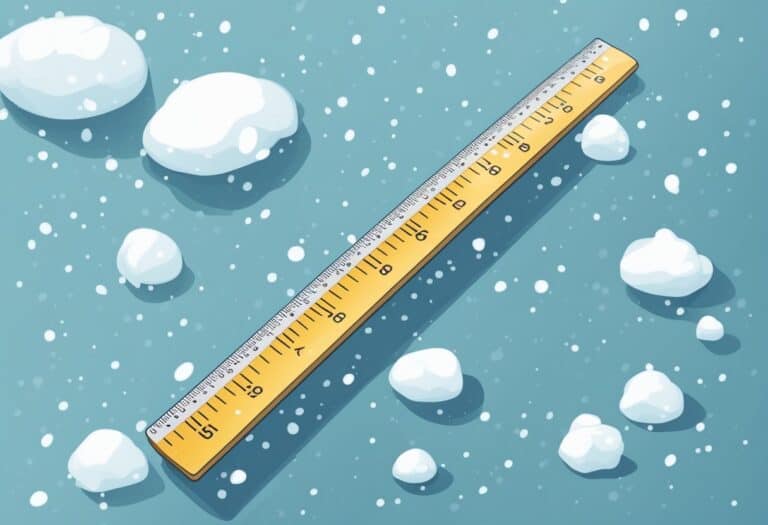Rainfall is a vital component of the Earth’s water cycle, replenishing water sources and influencing various ecosystems. Essentially, it’s the process where water vapor condenses into drops heavy enough to fall under gravity. The occurrence of rainfall can dramatically affect everything from agriculture to urban planning, with different types of rainfall presenting unique challenges and benefits. Understanding the types of rainfalls and their characteristics helps in predicting weather patterns and managing water resources more effectively.
The types of rainfall are generally categorized according to the processes that cause the clouds to release water. Convectional rainfall occurs when the sun heats the earth’s surface, causing water to evaporate and form clouds that produce rain. Orographic rainfall happens when moist air is forced to rise over mountain ranges, cooling and condensing into rain. Frontal rainfall, also known as cyclonic or stratiform, is caused when warm air meets cool air and is forced to rise, leading to condensation and precipitation. Each type of rainfall is critical in sustaining life, replenishing freshwater supplies, and contributing to the climate patterns observed around the globe.
Understanding different types of rainfall—convectional, orographic, and frontal—is key to predicting weather patterns and managing water resources. Each type is caused by distinct atmospheric processes, from surface heating and elevation changes to air mass collisions, impacting ecosystems and human activities globally.
Fundamentals of Rainfall

When you observe rain, you’re witnessing the most common form of precipitation: water falling to Earth’s surface. This phenomenon starts with the evaporation of water from oceans, lakes, rivers, and the soil, which then rises into the atmosphere. Here, it undergoes condensation, forming clouds.
Droplets within these clouds collide and coalesce, growing heavier until they are too heavy to remain aloft. This is when rain occurs, as the droplets descend towards the ground due to gravity. Notably, not all droplets begin from bodies of liquid water. Some form from the water vapor already present in the air through a process known as sublimation.
Here’s a simple breakdown:
- Evaporation: Water turns into vapor
- Condensation: Vapor forms droplets within clouds
- Precipitation: Droplets fall through the atmosphere as rain
The size and intensity of rain are influenced by the atmospheric conditions. Light rain has smaller droplets and falls gently, while heavy rain is characterized by larger droplets and can fall with greater force. When temperatures are high enough, all the precipitation falls as rain; but if temperatures within the clouds or at the ground level are below freezing, it can result in sleet, snow, or hail.
Understanding the basics of rain formation is crucial, as rainfall is essential for replenishing freshwater resources, sustaining plant life, and forming ecosystems vital for your well-being as a part of the environment.
Types of Rainfall
When considering the types of rainfall, it’s important to understand the underlying processes that cause precipitation. Different atmospheric conditions and geographical features play a crucial role in determining whether you’ll need an umbrella or not. Here, you’ll learn about the main types of rainfall: convectional, orographic, and frontal, as well as other forms of precipitation.
Convectional Rainfall
Convectional rainfall occurs when the sun heats the ground, leading to the warming of the air above. This warm air rises due to convection, carrying moisture with it. As it ascends, the air cools, causing the water vapor to condense into water droplets or ice crystals, forming cumulonimbus clouds. If the clouds contain enough moisture and instability, it will result in convectional rain, often accompanied by thunder due to the rapid upward movement of warm air.
Orographic or Relief Rainfall
Orographic rainfall, also known as relief rainfall, happens when moist air is forced to rise over mountainous terrain. The windward side of the mountain receives the rain as the air cools and condenses when it gains height. As the air descends on the leeward side of the mountain, it becomes warmer and drier, often resulting in a rain shadow area. Differences in windward and leeward moisture levels are significant, especially in regions with prominent mountain ranges affecting local climate.
Frontal or Cyclonic Rainfall
Occurring predominantly in temperate regions, frontal rainfall—also referred to as cyclonic rainfall—is the product of air masses colliding. When a warm front meets a cold front, the lighter warm air is pushed above the denser cold air. As the warm air rises and cools, the moisture it carries condenses to form precipitation. Depending on the temperature and dew point, this can result in rain, snow, hail, or sleet.
Other Precipitation Types
Beyond these primary categories, you may encounter various forms of precipitation influenced by specific climate conditions or geographic features. For example, coastal areas may experience ocean-generated precipitation, while temperature variations between the land and ocean can lead to unique precipitative events. Moreover, precipitation isn’t always in the form of rain—hydrological phenomena like snow, hail, sleet, and dew also contribute vital moisture to different ecosystems.
Global Patterns and Factors Influencing Rainfall
Rainfall patterns on Earth are largely dictated by a complex interplay of various factors, ranging from geographic latitude to climate phenomena. You can find varying rainfall patterns due to differences in latitude. Near the equator, in the tropics, intense sun exposure leads to high evaporation rates and subsequent heavy rains. As you move away from the equator to temperate regions, you’ll encounter more varied precipitation patterns.
It’s essential to understand the role of the wind and ocean currents in distributing moisture. When these currents carry warm, moist air towards land, they can result in precipitation. Conversely, areas situated downwind from mountain ranges, in the so-called rain shadow, receive significantly less rainfall. This effect can be seen in areas behind large mountain barriers, which often become deserts.
The vast sea influences your local climate by absorbing heat during the summer and releasing it during winter, helping to regulate coastal temperatures and adjacent land areas. This maritime effect is a key player in precipitation patterns, often leading to more rainfall in coastal areas.
Here’s a brief list of factors that can influence your regional rainfall patterns:
- Climate Events: Events such as El Niño or La Niña can cause significant deviations from normal rainfall patterns.
- Geography: Proximity to water bodies, altitude, and topography can cause variations in rainfall.
- Global Atmospheric Circulations: These circulations, which include the mid-latitude westerlies, can control where and when rain falls.
Your region’s rainfall is a puzzle with pieces like atmospheric pressure, temperature variances, and global climate events fitting together to form a complete precipitation picture. Understanding these factors can aid in predicting and adapting to changes in weather patterns, contributing to better planning and management of resources.
Measurement and Quantification of Rainfall
When you want to measure rainfall, you typically use units of millimeters (mm) to determine the amount of precipitation. This method quantifies how many millimeters of water would accumulate on a flat, impermeable surface during a rainfall event.
Rain gauges are your standard instruments for this purpose. They can range from simple, manual collectors to sophisticated, automatic tipping-bucket gauges, which record the size and accumulation of rainfall with each tip representing a set amount of precipitation, usually 0.1 mm.
Types of Rain Gauges:
- Standard Rain Gauge: An open cylinder that collects rain, which you measure with a ruler.
- Tipping-Bucket Rain Gauge: Automatically tips and empties after a preset amount of rain has fallen, electronically recording data.
- Weighing Gauge: Measures weight to calculate rainfall accumulation.
For areal rainfall estimates, which consider the distribution of rain over a region, weather radar systems play a critical role. These systems calculate the size and intensity of rain droplets to estimate how much rain is falling over a large area.
Factors Affecting Measurement:
- Evaporation: Loss of water before measurement can lead to inaccuracies.
- Wind: Can blow rain away from the collection area, affecting the gauge’s ability to accurately measure rainfall.
- Location: Placement of the rain gauge can significantly influence readings.
Advancements in technology have improved the accuracy of rainfall measurements. For instance, radar techniques help in identifying precipitation type and are useful for quantifying larger scale precipitation events. However, complex techniques are required to correct radar errors due to heavy rainfalls or high winds, which can compromise data quality.
Rainfall and Ecosystems
Rainfall significantly influences the character, distribution, and health of ecosystems across various climates and geographies. The amount, intensity, and periodicity of precipitation directly affect the type and abundance of vegetation, the formation and flow of rivers, and the status of lakes.
When you consider desert ecosystems, rainfall, although scarce, is a pivotal driver of biological activity. Even small precipitation events can trigger a burst of plant growth, known as “pulses.” These responses vary among different functional types of plants and are critical for maintaining the delicate balance in arid zones where rainfall variability plays a significant role.
In contrast, in more mesic or wetter ecosystems, the intervals between rain events can lead to different but equally profound ecological impacts. Extended periods without rain can stress plants and reduce biodiversity. However, when extreme precipitation regimes become prevalent, these systems face the challenge of managing water surplus, which can affect species composition and soil health.
Your understanding of how precipitation affects soil types is important, especially in agricultural contexts. Different soils react uniquely to rainfall variations, which can impact the abundance and diversity of organisms like arthropods, crucial for ecosystem functioning and crop health. Specific studies have begun to untangle these complex interactions.
Lastly, the seasonality of rainfall plays a crucial role, especially in tropical dry ecosystems. The timing and distribution of rain affect not just primary productivity but also carbon storage capacities. These patterns can dictate the ability of an ecosystem to support various life forms and maintain ecological processes.
Frequently Asked Questions
Rainfall types significantly differ based on how they are formed and influenced by geographical elements. Understanding these distinctions is essential when considering how rain affects various regions and climates.
What are the main categories of rainfall?
The main categories of rainfall include convectional, orographic, and cyclonic or frontal. These classes are differentiated by the processes that cause the atmosphere’s moisture to cool and condense into precipitation.
How is convectional rainfall formed?
Convectional rainfall occurs when the ground surface heats up, causing moist air to rise due to convection. As this air rises, it cools and condenses to form clouds, which then precipitate as rain.
What characterizes relief or orographic rainfall?
Relief or orographic rainfall is characterized by the lifting of moist air over elevated terrain, such as mountains. As the air ascends, it cools and leads to the condensation of moisture which precipitates on the windward slopes, creating rainfall.
Can you explain cyclonic or frontal rainfall?
Cyclonic or frontal rainfall happens when warm, moist air is forced to rise over cooler, denser air in the atmosphere, typically along the boundaries of weather fronts. This rise leads to cooling and condensation, resulting in rainfall.
What factors contribute to different types of rainfall in various geographical regions?
The factors that contribute to different types of rainfall in geographical regions include temperature, topography, atmospheric pressure systems, and the presence of water bodies. These elements together influence the specific type of rainfall experienced in a given area.
What methods are used to classify the intensity of rainfall?
Methods to classify the intensity of rainfall often involve measurements of rain rate, which refer to the amount of rainfall over a set period, typically reported in millimeters per hour. These methods can range from simple rain gauges to advanced Doppler radar technology.







